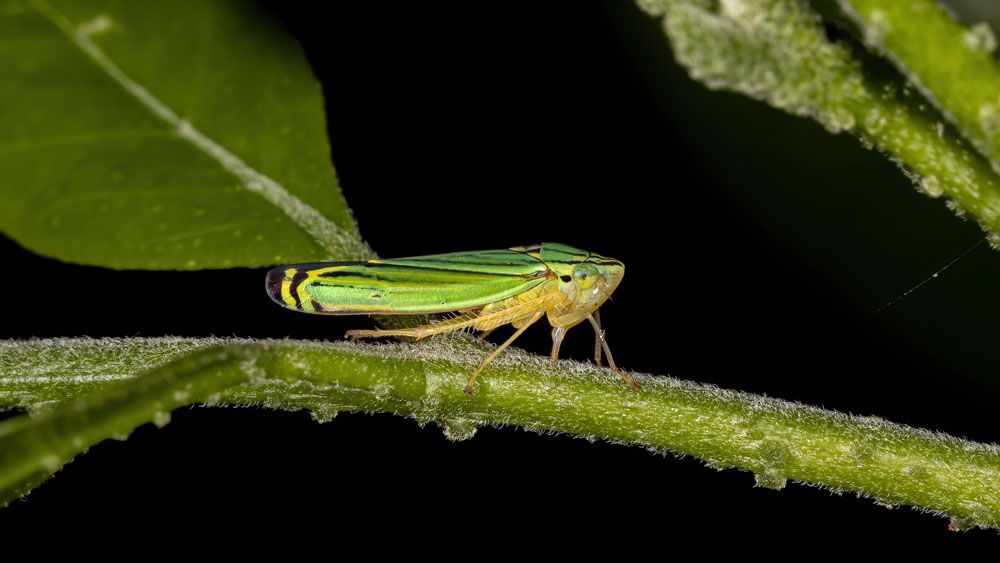
Blue-green Sharpshooter – Graphocepahla atropunctata
Blue-green Sharpshooter: Appearance, Territory, Damage, and Life Cycle
Latin Name: Graphocephala Atropunctata
Appearance: The blue-green sharpshooter, Graphocephala atropunctata, is a hemipteran insect native to California. Blue-green sharpshooters are sap-sucking, disease-carrying leafhopper relatives. Blue-green sharpshooters (Graphocephala atropunctata), which are native to California, have only lately become a severe nuisance.
The Blue-green Sharpshooter is a little (14 in., or 6 mm long) beetle with a blue or bluish-green top surface and a lighter and yellow-green head, prothorax, legs, and underside. Blue-green sharpshooters live a long time as adults. Nymphs and adults both have the strange habit of running sideways.
Hosts Plants: Over 150 plants have been identified as hosts. Pierce’s Disease, which infects grape plants, is known to be carried by the Blue-green Sharpshooter. Blue-green sharpshooters eat and deposit eggs on woody plants and vines
Territory: Sharpshooters may be found in the vegetation along streams and rivers in the Sacramento and San Joaquin Valleys, as well as in the Sierra Nevada foothills. They are also widespread in the Los Angeles basin, where they may be found on the leaves of both natural and cultivated ornamental plants and crops.
Damage Insect Cause: Blue-green sharpshooters infect plants with a bacterium that causes Pierce’s disease while they eat. Pierce’s disease is most commonly seen in grapes, although it can also be found in alfalfa, almond, avocado, blackberry, citrus, elderberry, and olive. Pierce’s disease is caused by bacteria that impede the movement of water and nutrients via the xylem, resulting in scorching, stunting, bleaching, leaf stippling, “matchstick” petioles, defoliation, and dieback. However, symptoms do not usually show during the year when the plant is afflicted. As sharpshooters migrate from plant to plant while feeding, many more plants become affected.
Pierce’s disease has no treatment, and afflicted plants normally die within 1 to 3 years. Almond leaf scorch, oleander leaf scorch, and olive leaf burn are all illnesses caused by the same bacterium. Spittlebugs and glassy-winged sharpshooters can also carry these germs.
Pierce’s disease outbreaks have been on the rise. This is thought to occur because higher temperatures allow vectors like blue-green sharpshooters and the germs they carry to survive the winter.
Life History and Habits: Each year, there is generally only one generation. Multiple generations are becoming conceivable as a result of rising temperatures and strained predator insects. Sharpshooters overwinter near waterways and become active in the spring. Just after bud break, eggs are deposited. Sharpshooters undergo full metamorphosis, leaving pale abandoned exoskeletons on the undersides of leaves. Throughout the summer, nymphs and adults feed on nutrient-rich sap before migrating back into adjacent weeds and plants.
